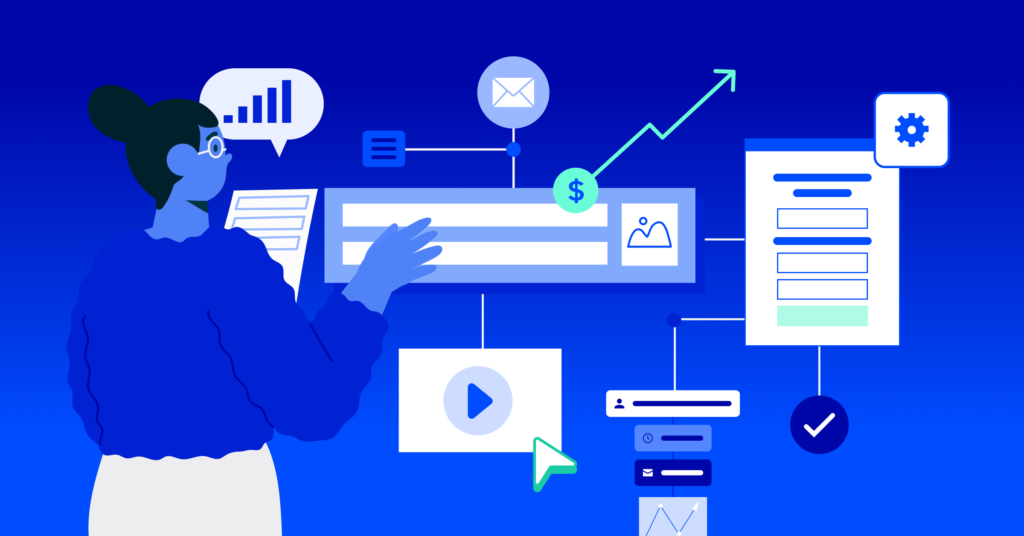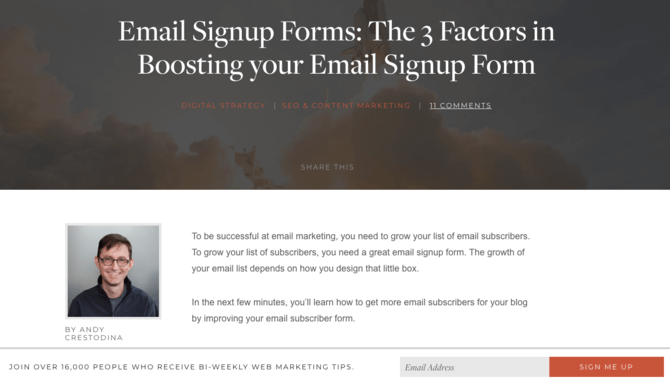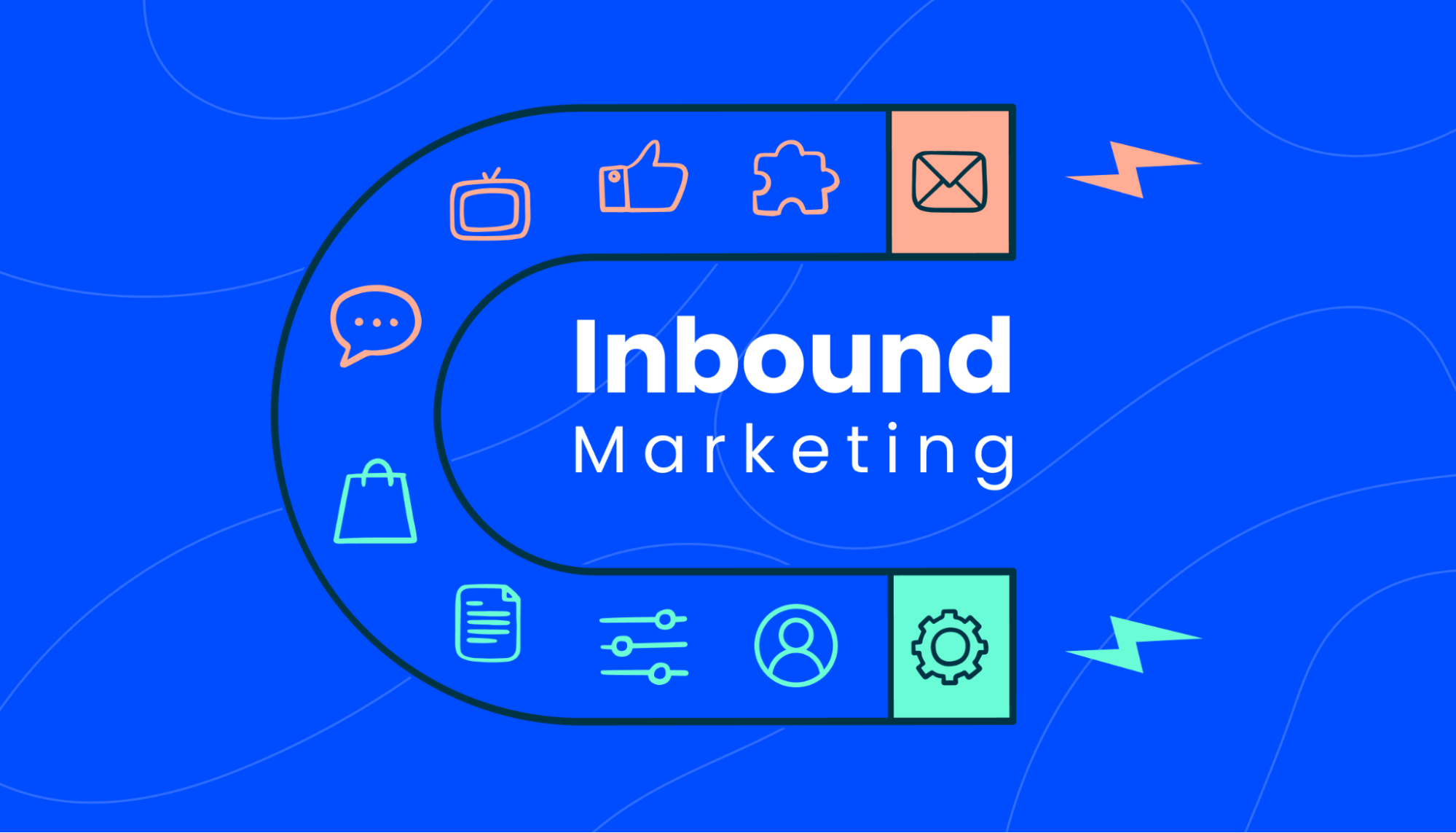Today’s marketing environment offers some pretty huge benefits, including tons of great tools to automate the process.
We can look deep into customer profiles, attribute acquisition to specific activities, and meet customers wherever they are.
The thing is, they’re kind of everywhere.
To meet them there, you have to be everywhere. That’s where your multi-channel marketing strategy comes in.
In this article, you’ll learn how to design a multi-channel marketing strategy that reaches and resonates with customers to drive new client acquisition and company growth.
Getting started with multi-channel marketing
Let’s start simple: what even is multi-channel marketing?
Well, it’s kind of in the name.
Multi-channel marketing is a marketing approach that leverages multiple channels (social media, email, PPC, digital advertising, organic search) to reach prospective and existing customers where they are.
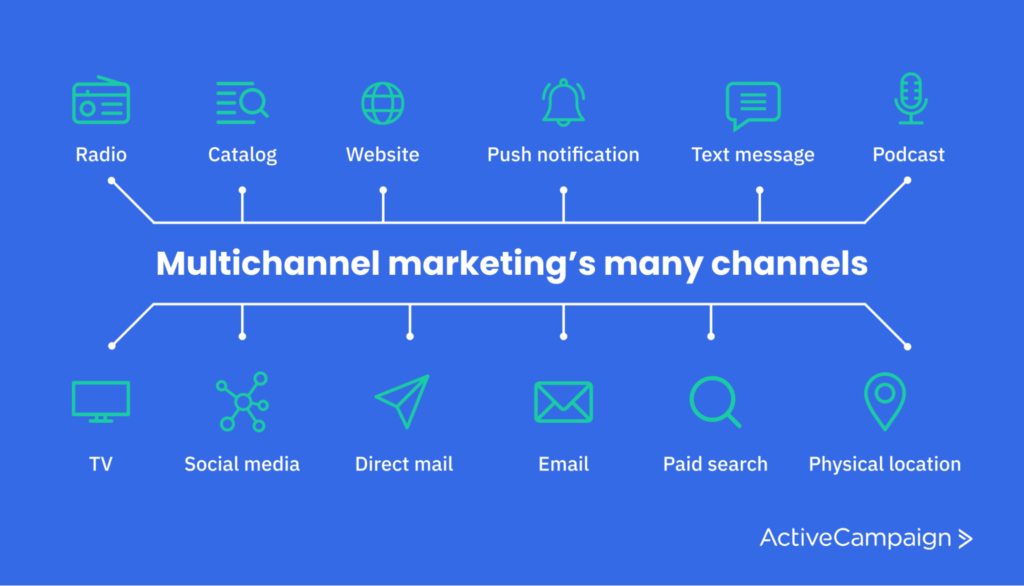
Most of your multi-channel marketing campaign will likely take place online, but it can include offline channels such as direct mail and promotional materials in physical retail stores.
The primary benefit of multi-channel marketing is obvious: if you’re showing up in more places, you’ll reach more potential customers, generate more leads, and close more revenue.
But multi-channel marketing has a few other important benefits, which include:
- Improved brand awareness
- A more consistent customer experience
- The ability to identify the most lucrative channels and double down on them
Plus, customers expect it.
In today’s environment, it would be odd if a customer saw your digital ad but couldn’t find you on social media.
Due to its importance, multi-channel marketing has become the norm, with most brands investing in reaching prospective customers across several channels (i.e., single-channel marketing is now rare).
In fact, many marketers take things a step further, engaging in an approach known as omnichannel marketing.
Multi-channel vs. omnichannel marketing
Multi-channel and omnichannel marketing are similar.
The primary distinction, however, is that omnichannel marketing focuses on building a cohesive customer experience across all online and offline channels. The idea is that customers can move from 1 channel to another and continue their shopping experience.
For example, after viewing a company’s website, a visitor may get served a remarketing ad on Facebook where they can complete their purchase.
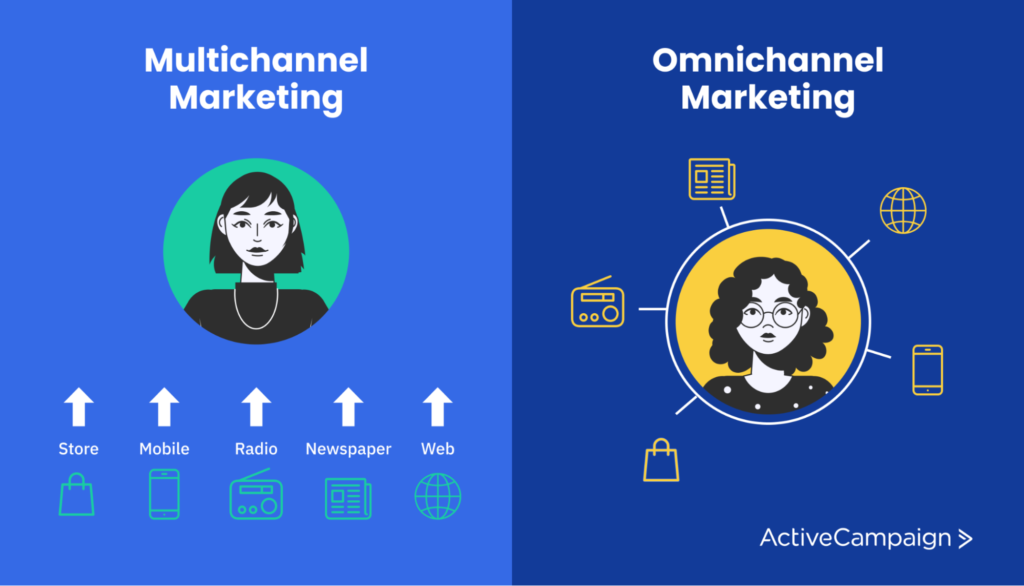
Here’s the thing, though:
While there is a technical (or, rather, semantic) difference between the 2, in practice, there aren’t any successful brands trying to keep channels siloed.
A cohesive customer experience is always the goal, so if you’re practicing multi-channel marketing, you’re probably already going omnichannel.
7 steps to building a high-performing multi-channel marketing strategy
Designing a multi-channel marketing strategy that performs well is all about research, planning, and documentation.
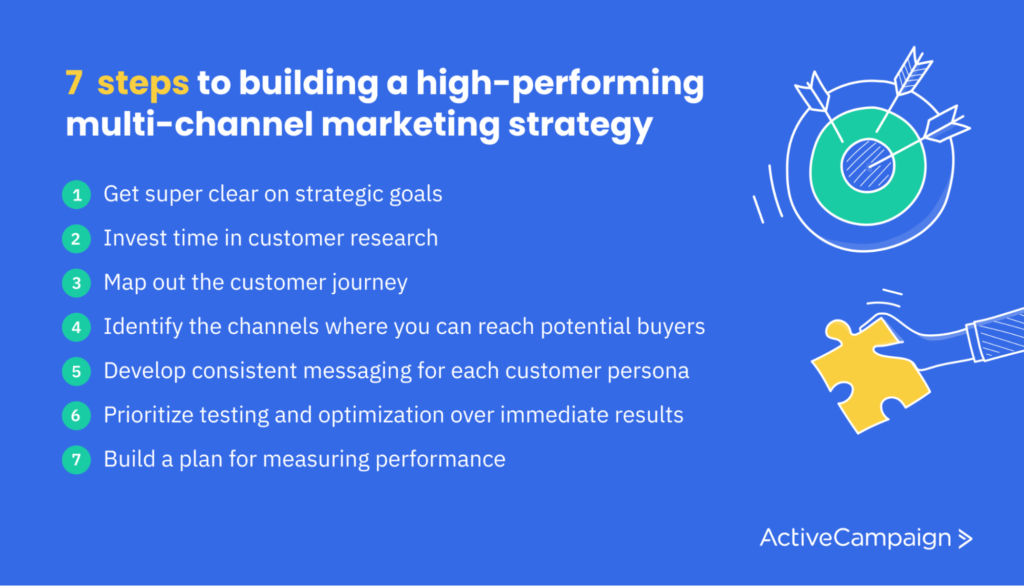
Here’s how to get started.
1. Get super clear on strategic goals
Before looking at tactics, channels, and potential acquisition methods, you must get your objectives straight.
The first step is defining your marketing goals.
“More revenue” isn’t sufficient. Yes, it’s kind of the point, but you need to get a little narrower to assess your strategy’s efficacy and related tactics, making adjustments as you go.
First, go 1 level down, describing the broad objectives you wish to achieve. For instance:
- Stronger lead generation
- Better customer retention
- Higher levels of brand awareness
- Greater lifetime revenue from each customer
These are great initiatives but not specific enough to be valuable marketing goals. We need to add timelines and make them quantifiable:
- 20% more leads each month
- Reduce churn by 10% by quarter 3
- Lift brand awareness scores by 5% by the end of the quarter
- 12% more revenue from the average customer by the end of the year
Now we’ve got specific, measurable goals. The last step is to connect a marketing metric with each goal, so we can easily measure and report on progress. For instance:
- 20% more leads each month, as measured by MQLs (marketing qualified leads)
- Reduce churn by 10% by quarter 3, as measured by the Customer Churn Rate
- Lift brand awareness scores by 5% by the end of the quarter, as measured by Brand Awareness
- 12% more revenue from the average customer by the end of the year, as measured by LTV (customer lifetime value)
2. Invest time in customer research
The main idea behind multi-channel marketing is reaching your customers at the right time and in the right place.
To achieve this broad goal, you need to know 2 things:
- Where they are (and when)
- How you’re going to attract their attention
The only way to discover this is through intensive customer research.
First, comb the data you already have on your existing customers (probably to be found in your CRM). Look for trends in attributes such as:
- Industry
- Pain points and challenges
- Product usage
- Demographics
- How they found you
Next, supplement that data with answers from your actual customers. Use surveys to capture quantitative information. For instance, learning about your buyers’ social media preferences will be helpful.
Questions like “Which social media platform do you use the most?” and “What time of day do you typically find yourself on that platform?” are suitable for customer surveys.
Use customer interviews (via phone or video) to extract more qualitative insights. For example, to develop messaging that captures your audience’s attention (more on that soon), you need to know what challenges and setbacks potential customers are experiencing right now.
Qualitative customer interviews can be used to elicit that information from your current customers: “Before you found [our product], how was [the problem you solve] impacting your business?”
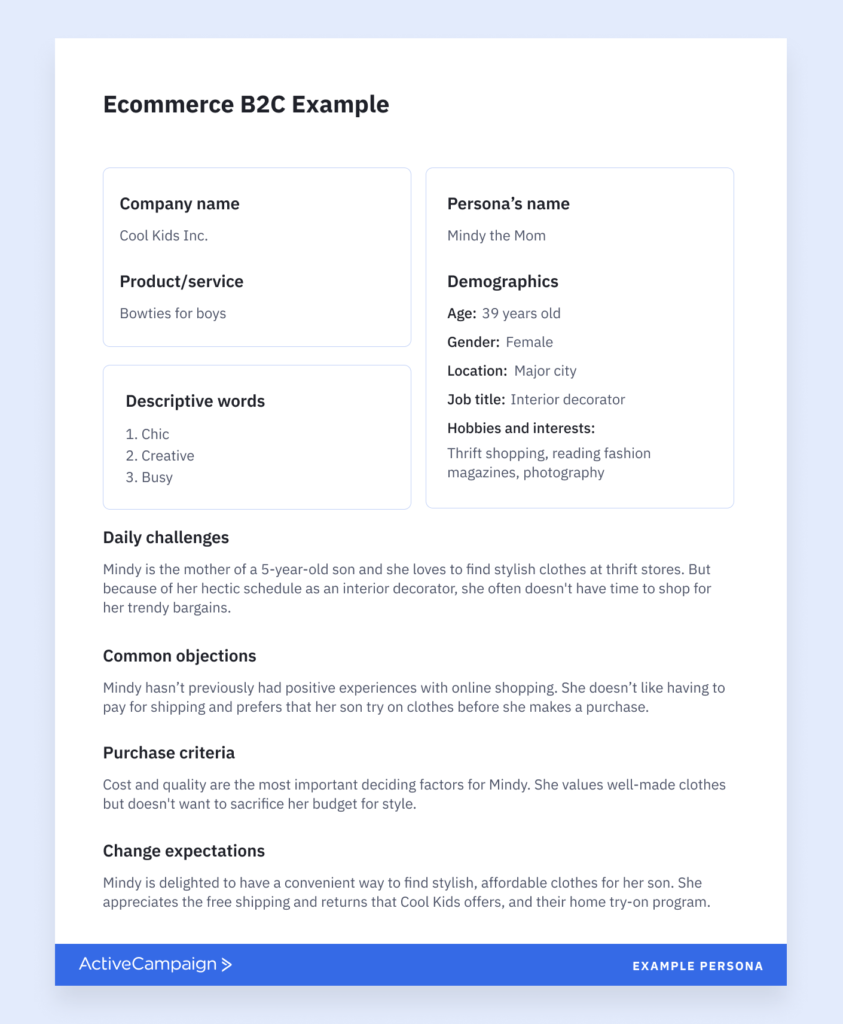
Lastly, collate this information in the form of buyer personas.
Buyer personas are fictional representations of your ideal customer, providing insight at a glance into attributes that represent them (such as those challenges mentioned above).
3. Map out the customer journey
Understanding how a target customer moves from “Hmm, this problem is a little bit annoying” to “I need to solve this now, and I’m going to purchase this product to do so.” is critical for developing a powerful cross-channel marketing strategy.
We call this process customer journey mapping.
A customer journey map is a simplified representation of the broad steps a buyer goes through before purchasing. We say simplified because we aren’t aiming to capture every single possible step a customer could take to reach us; we’re looking at the most common path.
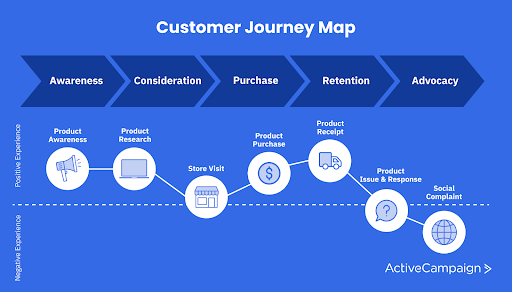
Take a look at the above example of a customer journey map for a retail brand.
Most customers are going to perform research online. They might engage with the brand’s blog posts and product pages, read reviews online, and watch product demonstration videos on YouTube.
Some might visit physical stores to check items out in person, but this is the least common path for this example.
Your customer journey map informs the marketing channels you’ll invest in and the marketing messaging you’ll use at each point (that is, the next 2 steps).
Craft emails that open hearts, minds, and wallets with our FREE email copywriting templates!
4. Identify the channels where you can reach potential buyers
A big part of your customer interviews should revolve around learning which channels your customers use most regularly and for what.
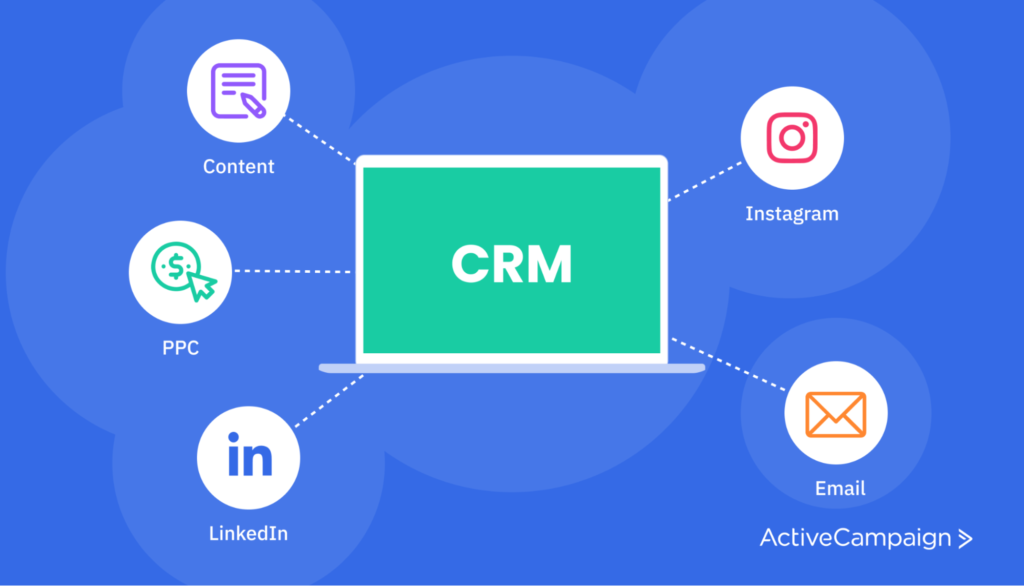
Assumptions like “B2B customers are best reached on LinkedIn” might have some value, but they should be backed up with qualitative research and some good old-fashioned testing.
For example, running the same ad on Facebook, Twitter, and Instagram and comparing engagement across these social channels will tell you exactly where your buyers actually are.
Break these digital marketing channels down by customer journey stage.
For instance, perhaps you can reach new buyers via LinkedIn during the awareness phase, but consideration stage content is best distributed via email marketing.
5. Develop consistent messaging for each customer persona
Determining your customers’ preferred channels is half the battle. The other half is understanding what marketing messages will capture their attention and resonate at each stage of the inbound marketing funnel.
You’ll want to keep your messaging consistent across all channels but different for each customer persona.
Weird contradiction, we know. Here’s how.
Settle on 1 primary marketing message for each persona. Consider the imaginary CRM company we introduced in step 2. Its messaging for insurance customers might center around lead generation. For real estate agents, it might be more about nurturing existing customer relationships.
Then, ensure that 1 message is what’s being communicated in each customer interaction. For instance, a sponsored social media post targeting insurance agents should leverage lead gen-focused messaging.
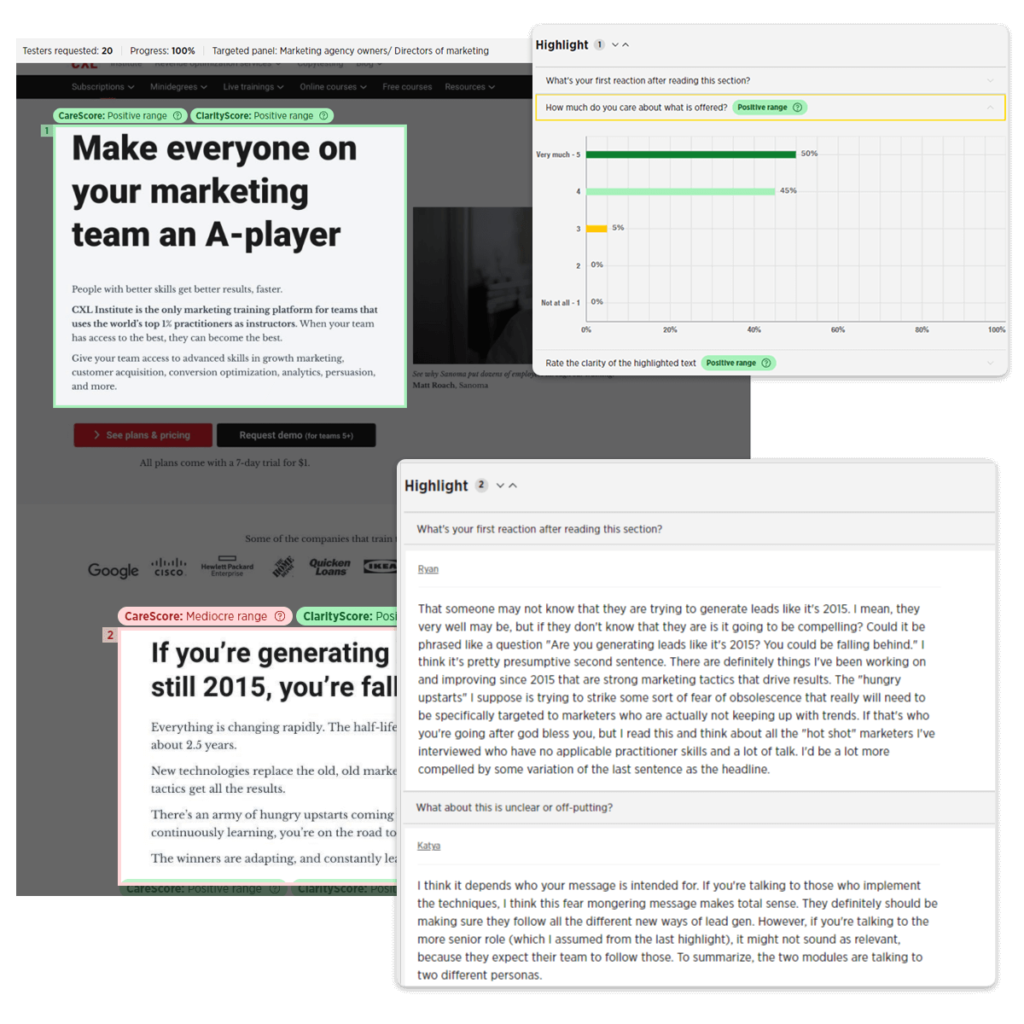
Use message testing services like Wynter to determine how effective your communications are for each segment before rolling out your multi-channel strategy.
6. Prioritize testing and optimization over immediate results
Launching your multi-channel marketing strategy and expecting immediate, impressive results is a recipe for disappointment.
Sure, you should see some results from the get-go (otherwise, this may be a sign that you need to return to the drawing board), but don’t expect your best work to show yet.
To support the development of a truly impressive multi-channel marketing strategy, consider investing the first quarter or so in testing and optimization.
Take a page from the book of growth marketers (who focus entirely on designing and running marketing experiments) to maximize performance at each touchpoint.
A common example is the landing page A/B test.
You’ve developed a landing page to support a new social media campaign. The idea is to run ads on LinkedIn, direct viewers to your landing page, and convert visitors to a free trial there.
There’s a lot that can be tested here. You can run growth experiments to test:
- Copy and messaging
- Design, layout, and imagery
- Call-to-action copy and placement
- Page length
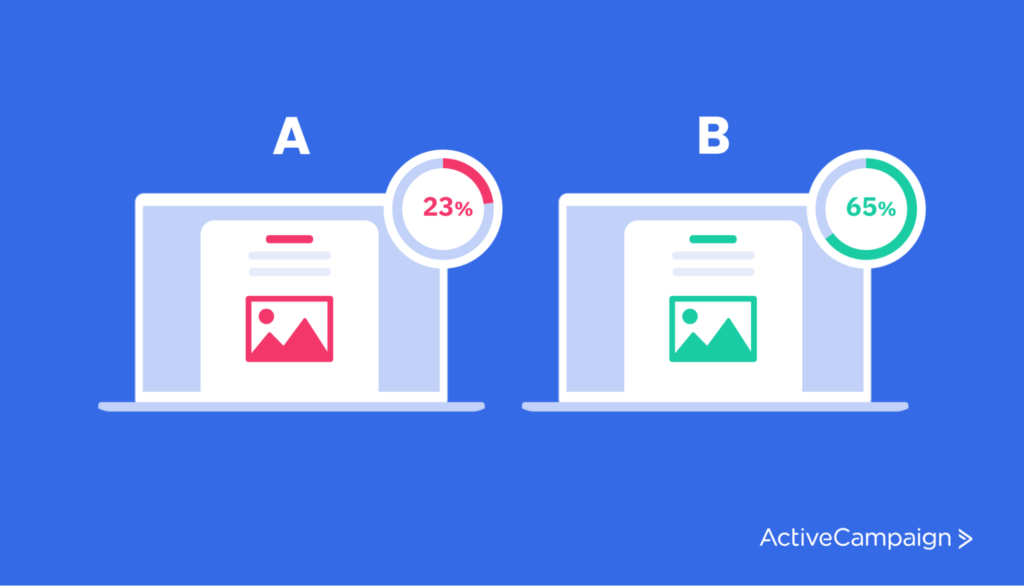
In short, don’t be overcommitted to the first version of your strategy. Be prepared to alter it, and run experiments to tell you where changes need to be made.
7. Build a plan for measuring performance
Lastly, make sure you have a plan in place for measuring the performance of your new marketing strategy.
You’ve already identified the key metrics you’ll track that demonstrate performance against your overarching objectives (remember that from step one?).
Now, define your reporting cadence:
- How often will you report on key metrics? Weekly? Monthly?
- Who is responsible for generating this report?
- How and when will progress be discussed?
- How will performance against these metrics be used to inform strategic changes?
Most marketing automation platforms will have the most essential analytics built-in, meaning you’ll be able to access up-to-date insights at a glance.
FAQs
What is a multi-channel strategy for marketing?
Multi-channel marketing strategies focus on communicating with customers across various marketing channels, such as social media, email, organic content, and SMS marketing.
What is an example of multi-channel marketing?
TestGorilla uses multi-channel marketing to capture interest through lead-generating Facebook ads and then nurture leads through email marketing and targeted Google Ads.
Learn from more multi-channel marketing experts in our guide: 7 multi-channel marketing examples done right.
How do you create a multi-channel marketing strategy?
Follow these 7 steps to create a high-performing multi-channel marketing strategy:
1. Get super clear on strategic goals
2. Invest time in customer research
3. Map out the customer journey
4. Identify the channels where you can reach potential buyers
5. Develop consistent messaging for each customer persona
6. Prioritize testing and optimization over immediate results
7. Build a plan for measuring performance
Conclusion
The best multi-channel marketers invest time upfront in audience research and customer journey mapping and engage in rigorous testing and experimentation to optimize their tactics to reach potential customers.
They also have a best friend by their side: a multi-channel marketing platform.
Learn how ActiveCampaign’s flexible and adaptable solution delivers cross-channel engagement for a cohesive customer experience.
